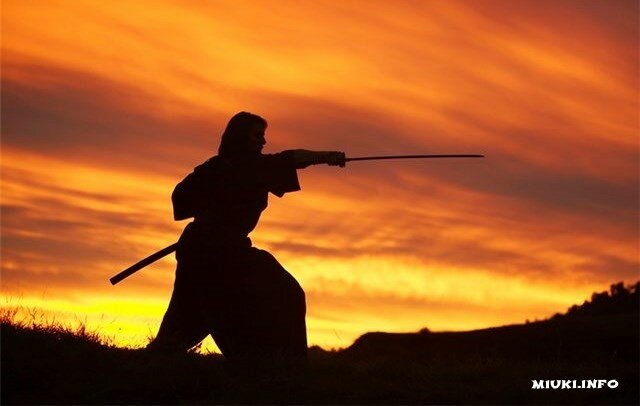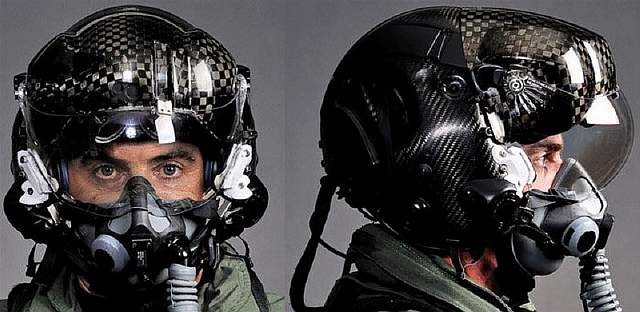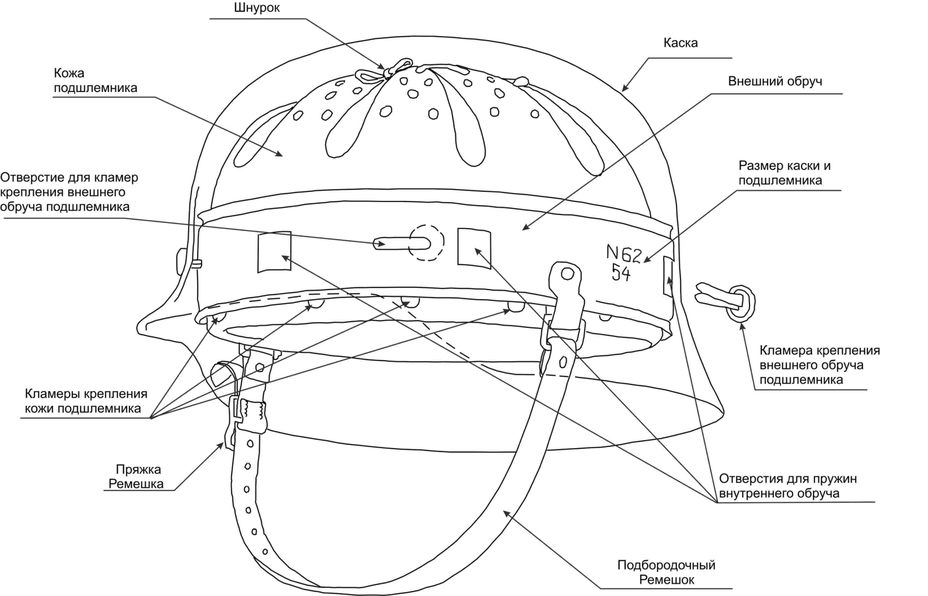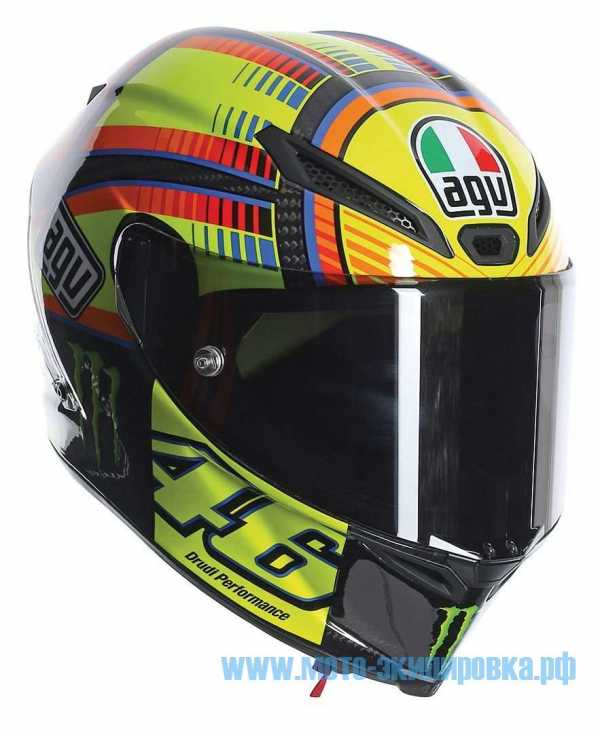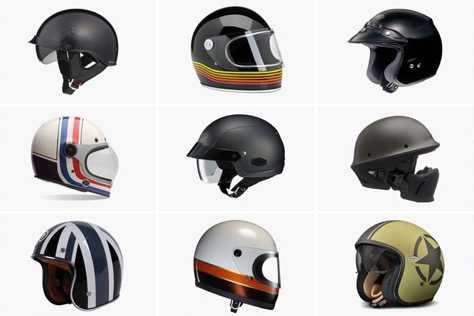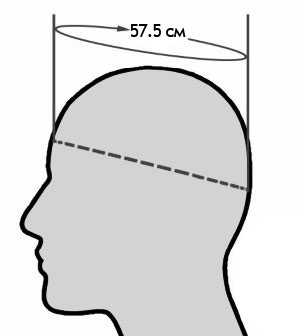История боевых шлемов в Западной Европе: от раннего средневековья до раннего Нового времени. Часть II. Шлем морион
от раннего средневековья до раннего Нового времени. Часть II » Военное обозрение
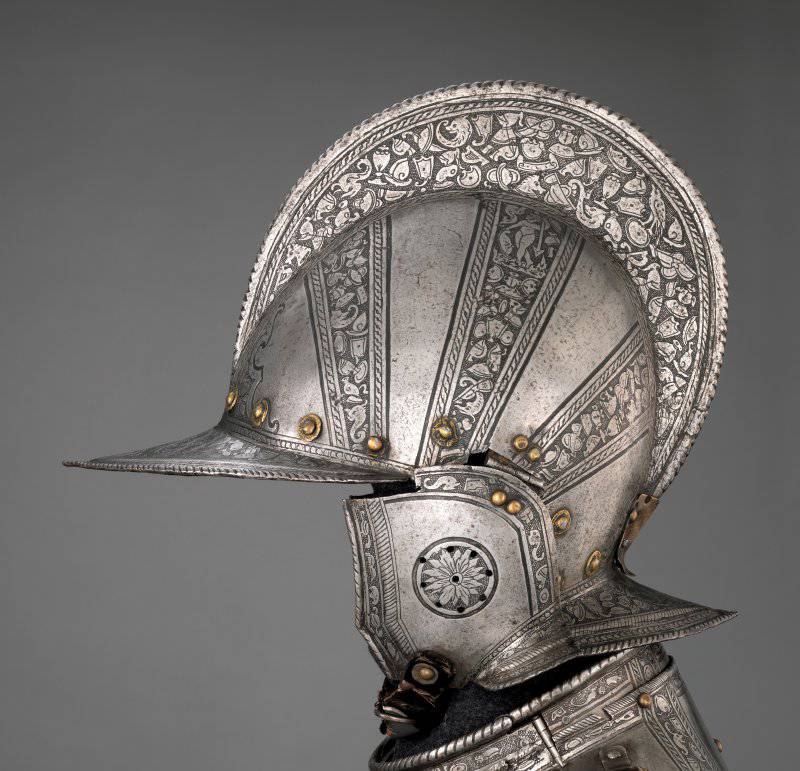
Рис. 24. Бургиньот открытого типа с ремешком. Северная Италия. Вероятно, Милан. 1571 г.
Бургиньот, бургундский шлем или штурмхаубе, от нем. Sturmhaube — "штурмовая каска", впервые появился в Бургундии в первой половине XVI века. Шлем в форме чаши с латным воротником шеи и, как правило, с гребнем. Имеет большое количество разновидностей. Бывают открытого и закрытого типа. В любом случае имеют подвижный верхний щиток в форме козырька, поднимающийся вверх, и раскрывающиеся в стороны науши, которые крепятся на шарнирах к шлему. Если науши друг с другом не соединяются или соединяются только подбородочным ремешком, то это бургиньот открытого типа.

Рис. 25. Бургиньот закрытого типа. Вес 2,4 кг. Около 1620-1630 гг.

Рис. 26. Бургиньот закрытого типа. Франция. Вес 2,24 кг. 1610 г.
У закрытого типа науши образуют жесткую конструкцию и соединяются вместе спереди крючком, образуя подбородник. Имеют округлую форму и почти все имеют тонкий гребень разной высоты. В наиболее защищенном варианте может дополняться откидным книзу наподбородником вместо наушин — falling buffe, образующим подобие забрала.

Рис. 27. Бургиньот с откидным наподбородником венгерского типа. Германия. Около 1550 г.

Рис. 28. Бургиньот с поднятым козырьком и опущенным наподбородником венгерского типа. Германия. Около 1550 г.
Очень удобные в ношении шлемы, обеспечивающие хорошую защиту. Был боевым шлемом и очень активно использовался кавалерией, и реже пехотинцами. Имеет уникальную итальянскую разновидность — тяжелый штурмовой шлем савойяр, отличительной внешней чертой которого является гротескно-упрощённое подобие веселого лица с усмехающимся ртом (подробно здесь: http://topwar.ru/45672-savoyyar.html).

Рис. 29. Бургиньот Савойяр. Северная Италия. Вес 4,5 кг. Около 1600 г.

Рис. 30. Бургиньот Савойяр с поднятым козырьком и откинутыми наушами. Северная Италия. Вес 4,5 кг. Около 1600 г.

Рис. 31. Составной боевой доспех с бургиньотом. Нюрнберг. Последняя четверть XVI в.

Рис. 32. Морион трабантлейбгвардии курфюрста Саксонии Кристиана II. Около 1600 г.
Морион — всем известный цельнометаллический открытый шлем с очень большим гребнем и сильно загнутыми спереди и сзади полями. Появился в начале XVI века и был в употреблении еще в начале XVII века. Получил широкое распространение по всей Западной Европе, особенно в Испании и Англии. В массовой культуре неразрывно связан с образом конкистадоров. Использовался как кавалерией, так и пехотой.

Рис. 33. Армэ. Милан. Вес 2,9 кг. Около 1490 г.
Армэ появились в конце XV века (хотя в Италии еще в первой половине XV века), просуществовали почти весь XVI век. Наряду с закрытыми шлемами являются самыми совершенными и одновременно защищенными шлемами в истории. Отличительной чертой армэ является наличие двух подвижных раскрывающихся частей — наушей, крепящихся на шарнирах и соединяющихся на подбородке штифтом и защищающих боковые части головы, щеки и подбородок. Всегда имеют поднимающееся назад и вверх забрало. Арме мог иметь встроенную защиту для шеи и ключиц.

Рис. 34. Армэ со снятым забралом. Северная Италия. Вес 3,6 кг. Около 1470-1510 гг.
Армэ и закрытые шлемы имеют особую разновидность забрал в форме гротескной маски лица с большим горбатым носом.

Рис. 35. Армэ с забралом-маской. Инсбрук или Нюрнберг. Вес 3,23 кг. Около 1520-1525 гг.

Рис. 36. Закрытый шлем с забралом-маской. Около 1520-1530 гг.
Использовался рыцарями на турнирах и в бою. Армэ и закрытые шлемы были дороги и поэтому доступны далеко не всем рыцарям.


Рис. 37 и 38. Закрытый шлем с сегментарным забралом. Милан. Вес 2,78 кг. 1590-1595 гг.
Закрытый шлем был боевым шлемом, который носили кавалеристы в позднесредневековую и в ренессансную эпоху — XVI век и первая половина XVII века. Как тип шлема, он появился ближе к концу XV века, хотя есть и более ранние экземпляры. Закрытый шлем очень похож на более ранний армэ, но имеет различный метод открытия и конструкцию. В то время как у армэ есть две подвижные раскрывающиеся науши, у закрытого шлема вместо этого есть своего рода встроенный бевор или нижнее забрало, которое прикреплено таким же образом к шлему, как и его верхнее забрало, часто на одних и тех же креплениях. Нижнее и верхнее забрало у закрытых шлемов подвижны.


Рис. 39 и 40. Закрытый шлем. Аугсбург или Нюрнберг. Вес 2,8 кг. Около 1580 г.

Рис. 41. Закрытый шлем. Северная Италия. Вес 3,86 кг. Около 1600-1620 гг.
Закрытый шлем полностью защищает голову, имеет характерную округлую форму и, как правило, массивный рифленый гребень. Часто имеет и встроенную защиту шеи, горла и ключиц.

Рис. 42. Закрытый шлем штатгальтера Испанских Нидерландов Фернандо Альвареса де Толедо, герцога Альбы. Милан. Около 1570 г.

На протяжении XVII века шлемы вместе с остальными доспехами постепенно вышли из употребления в военном деле: они стали просто бесполезны против все более совершенствующегося огнестрельного оружия, оставшись только у тяжелой кавалерии в Европе — кирасиров.

Рис. 44. Ранний кирасирский шлем. Нюрнберг. Около 1610-1620 гг.

Рис. 45. Аркебузерский шлем. Англия. Вес 2 кг. Около 1630-1640 гг.

Рис. 46. Осадный шлем для эскалады (штурма крепостных стен с использованием приставных лестниц). Франция. Вес 10,17 кг. Около 1650-1670 гг.

Рис. 47. Доспех с кирасирским шлемом короля Португалии Педро II. Вес (общий) 19,6 кг. 1683 г.
Подход к формированию армий существенно изменился: если в предыдущую эпоху для овладения холодным оружием рыцарям требовались годы обучения и уйма средств на снаряжение, то появление огнестрельного оружия все перевернуло с точностью до наоборот. Стоимость подготовки и снаряжения боевой единицы для эффективного боя кардинальным образом снизилась. Больше не было необходимости в дорогих доспехах. На несколько столетий шлемы практически выходят из употребления. Однако в начале XX века они вновь появляются у военных — уже в виде всем известных касок.

Немецкие шлемы M-17 и M-18 времен Второй мировой войны. Фото конца 30-х.

topwar.ru
от раннего средневековья до раннего Нового времени. Часть II » Военное обозрение

Рис. 24. Бургиньот открытого типа с ремешком. Северная Италия. Вероятно, Милан. 1571 г.
Бургиньот, бургундский шлем или штурмхаубе, от нем. Sturmhaube — "штурмовая каска", впервые появился в Бургундии в первой половине XVI века. Шлем в форме чаши с латным воротником шеи и, как правило, с гребнем. Имеет большое количество разновидностей. Бывают открытого и закрытого типа. В любом случае имеют подвижный верхний щиток в форме козырька, поднимающийся вверх, и раскрывающиеся в стороны науши, которые крепятся на шарнирах к шлему. Если науши друг с другом не соединяются или соединяются только подбородочным ремешком, то это бургиньот открытого типа.

Рис. 25. Бургиньот закрытого типа. Вес 2,4 кг. Около 1620-1630 гг.

Рис. 26. Бургиньот закрытого типа. Франция. Вес 2,24 кг. 1610 г.
У закрытого типа науши образуют жесткую конструкцию и соединяются вместе спереди крючком, образуя подбородник. Имеют округлую форму и почти все имеют тонкий гребень разной высоты. В наиболее защищенном варианте может дополняться откидным книзу наподбородником вместо наушин — falling buffe, образующим подобие забрала.

Рис. 27. Бургиньот с откидным наподбородником венгерского типа. Германия. Около 1550 г.

Рис. 28. Бургиньот с поднятым козырьком и опущенным наподбородником венгерского типа. Германия. Около 1550 г.
Очень удобные в ношении шлемы, обеспечивающие хорошую защиту. Был боевым шлемом и очень активно использовался кавалерией, и реже пехотинцами. Имеет уникальную итальянскую разновидность — тяжелый штурмовой шлем савойяр, отличительной внешней чертой которого является гротескно-упрощённое подобие веселого лица с усмехающимся ртом (подробно здесь: http://topwar.ru/45672-savoyyar.html).

Рис. 29. Бургиньот Савойяр. Северная Италия. Вес 4,5 кг. Около 1600 г.

Рис. 30. Бургиньот Савойяр с поднятым козырьком и откинутыми наушами. Северная Италия. Вес 4,5 кг. Около 1600 г.

Рис. 31. Составной боевой доспех с бургиньотом. Нюрнберг. Последняя четверть XVI в.

Рис. 32. Морион трабантлейбгвардии курфюрста Саксонии Кристиана II. Около 1600 г.
Морион — всем известный цельнометаллический открытый шлем с очень большим гребнем и сильно загнутыми спереди и сзади полями. Появился в начале XVI века и был в употреблении еще в начале XVII века. Получил широкое распространение по всей Западной Европе, особенно в Испании и Англии. В массовой культуре неразрывно связан с образом конкистадоров. Использовался как кавалерией, так и пехотой.

Рис. 33. Армэ. Милан. Вес 2,9 кг. Около 1490 г.
Армэ появились в конце XV века (хотя в Италии еще в первой половине XV века), просуществовали почти весь XVI век. Наряду с закрытыми шлемами являются самыми совершенными и одновременно защищенными шлемами в истории. Отличительной чертой армэ является наличие двух подвижных раскрывающихся частей — наушей, крепящихся на шарнирах и соединяющихся на подбородке штифтом и защищающих боковые части головы, щеки и подбородок. Всегда имеют поднимающееся назад и вверх забрало. Арме мог иметь встроенную защиту для шеи и ключиц.

Рис. 34. Армэ со снятым забралом. Северная Италия. Вес 3,6 кг. Около 1470-1510 гг.
Армэ и закрытые шлемы имеют особую разновидность забрал в форме гротескной маски лица с большим горбатым носом.

Рис. 35. Армэ с забралом-маской. Инсбрук или Нюрнберг. Вес 3,23 кг. Около 1520-1525 гг.

Рис. 36. Закрытый шлем с забралом-маской. Около 1520-1530 гг.
Использовался рыцарями на турнирах и в бою. Армэ и закрытые шлемы были дороги и поэтому доступны далеко не всем рыцарям.


Рис. 37 и 38. Закрытый шлем с сегментарным забралом. Милан. Вес 2,78 кг. 1590-1595 гг.
Закрытый шлем был боевым шлемом, который носили кавалеристы в позднесредневековую и в ренессансную эпоху — XVI век и первая половина XVII века. Как тип шлема, он появился ближе к концу XV века, хотя есть и более ранние экземпляры. Закрытый шлем очень похож на более ранний армэ, но имеет различный метод открытия и конструкцию. В то время как у армэ есть две подвижные раскрывающиеся науши, у закрытого шлема вместо этого есть своего рода встроенный бевор или нижнее забрало, которое прикреплено таким же образом к шлему, как и его верхнее забрало, часто на одних и тех же креплениях. Нижнее и верхнее забрало у закрытых шлемов подвижны.


Рис. 39 и 40. Закрытый шлем. Аугсбург или Нюрнберг. Вес 2,8 кг. Около 1580 г.

Рис. 41. Закрытый шлем. Северная Италия. Вес 3,86 кг. Около 1600-1620 гг.
Закрытый шлем полностью защищает голову, имеет характерную округлую форму и, как правило, массивный рифленый гребень. Часто имеет и встроенную защиту шеи, горла и ключиц.

Рис. 42. Закрытый шлем штатгальтера Испанских Нидерландов Фернандо Альвареса де Толедо, герцога Альбы. Милан. Около 1570 г.

На протяжении XVII века шлемы вместе с остальными доспехами постепенно вышли из употребления в военном деле: они стали просто бесполезны против все более совершенствующегося огнестрельного оружия, оставшись только у тяжелой кавалерии в Европе — кирасиров.

Рис. 44. Ранний кирасирский шлем. Нюрнберг. Около 1610-1620 гг.

Рис. 45. Аркебузерский шлем. Англия. Вес 2 кг. Около 1630-1640 гг.

Рис. 46. Осадный шлем для эскалады (штурма крепостных стен с использованием приставных лестниц). Франция. Вес 10,17 кг. Около 1650-1670 гг.

Рис. 47. Доспех с кирасирским шлемом короля Португалии Педро II. Вес (общий) 19,6 кг. 1683 г.
Подход к формированию армий существенно изменился: если в предыдущую эпоху для овладения холодным оружием рыцарям требовались годы обучения и уйма средств на снаряжение, то появление огнестрельного оружия все перевернуло с точностью до наоборот. Стоимость подготовки и снаряжения боевой единицы для эффективного боя кардинальным образом снизилась. Больше не было необходимости в дорогих доспехах. На несколько столетий шлемы практически выходят из употребления. Однако в начале XX века они вновь появляются у военных — уже в виде всем известных касок.

Немецкие шлемы M-17 и M-18 времен Второй мировой войны. Фото конца 30-х.

topwar.ru
Морион (шлем) - WikiVisually
1. Испания – By population, Spain is the sixth largest in Europe and the fifth in the European Union. Spains capital and largest city is Madrid, other urban areas include Barcelona, Valencia, Seville, Bilbao. Modern humans first arrived in the Iberian Peninsula around 35,000 years ago, in the Middle Ages, the area was conquered by Germanic tribes and later by the Moors. Spain is a democracy organised in the form of a government under a constitutional monarchy. It is a power and a major developed country with the worlds fourteenth largest economy by nominal GDP. Jesús Luis Cunchillos argues that the root of the span is the Phoenician word spy. Therefore, i-spn-ya would mean the land where metals are forged, two 15th-century Spanish Jewish scholars, Don Isaac Abravanel and Solomon ibn Verga, gave an explanation now considered folkloric. Both men wrote in two different published works that the first Jews to reach Spain were brought by ship by Phiros who was confederate with the king of Babylon when he laid siege to Jerusalem. This man was a Grecian by birth, but who had given a kingdom in Spain. He became related by marriage to Espan, the nephew of king Heracles, Heracles later renounced his throne in preference for his native Greece, leaving his kingdom to his nephew, Espan, from whom the country of España took its name. Based upon their testimonies, this eponym would have already been in use in Spain by c.350 BCE, Iberia enters written records as a land populated largely by the Iberians, Basques and Celts. Early on its coastal areas were settled by Phoenicians who founded Western Europe´s most ancient cities Cadiz, Phoenician influence expanded as much of the Peninsula was eventually incorporated into the Carthaginian Empire, becoming a major theater of the Punic Wars against the expanding Roman Empire. After an arduous conquest, the peninsula came fully under Roman Rule, during the early Middle Ages it came under Germanic rule but later, much of it was conquered by Moorish invaders from North Africa. In a process took centuries, the small Christian kingdoms in the north gradually regained control of the peninsula. The last Moorish kingdom fell in the same year Columbus reached the Americas, a global empire began which saw Spain become the strongest kingdom in Europe, the leading world power for a century and a half, and the largest overseas empire for three centuries. Continued wars and other problems led to a diminished status. The Napoleonic invasions of Spain led to chaos, triggering independence movements that tore apart most of the empire, eventually democracy was peacefully restored in the form of a parliamentary constitutional monarchy. Spain joined the European Union, experiencing a renaissance and steady economic growth
2. XVI век – The 16th century begins with the Julian year 1500 and ends with either the Julian or the Gregorian year 1600. It is regarded by historians as the century in which the rise of the West occurred, during the 16th century, Spain and Portugal explored the worlds seas and opened worldwide oceanic trade routes. In Europe, the Protestant Reformation gave a blow to the authority of the papacy. European politics became dominated by conflicts, with the groundwork for the epochal Thirty Years War being laid towards the end of the century. In Italy, Luca Pacioli published the first work ever on accounting, in United Kingdom, the Italian Alberico Gentili wrote the first book on public international law and divided secularism from canon law and Roman Catholic theology. In the Middle East, the Ottoman Empire continued to expand, with the Sultan taking the title of Caliph, China evacuated the coastal areas, because of Japanese piracy. Japan was suffering a civil war at the time. Mughal Emperor Akbar extended the power of the Mughal Empire to cover most of the South Asian sub continent and his rule significantly influenced arts, and culture in the region. These events directly challenged the notion of an immutable universe supported by Ptolemy and Aristotle. Polybius The Histories translated into Italian, English, German and French, medallion rug, variant Star Ushak style, Anatolia, is made. It is now kept at The Saint Louis Art Museum,1500, Charles V, Holy Roman Emperor and King of Spain was born. 1500, Guru Nanak the beginning and spreading of the 5th largest Religion in the World Sikhism,1500, Spanish navigator Vicente Yáñez Pinzón encounters Brazil but is prevented from claiming it by the Treaty of Tordesillas. 1500, Portuguese navigator Pedro Álvares Cabral claims Brazil for Portugal,1500, The Ottoman fleet of Kemal Reis defeats the Venetians at the Second Battle of Lepanto. 1501, Michelangelo returns to his native Florence to begin work on the statue David,1501, Safavid dynasty reunified Iran and ruled over it until 1736. Safavids adopt a Shia branch of Islam,1502, First reported African slaves in The New World 1503, Foundation of the Sultanate of Sennar by Amara Dunqas, in what is modern Sudan 1503, Spain defeats France at the Battle of Cerignola. Considered to be the first battle in history won by gunpowder small arms,1503, Leonardo da Vinci begins painting the Mona Lisa and completes it three years later. 1503, Nostradamus was born on either December 14, or December 21,1504, A period of drought, with famine in all of Spain. 1504, Death of Isabella I of Castile, Joanna of Castille became the Queen,1505, Zhengde Emperor ascended the throne of Ming Dynasty
3. Доспехи – Body armor or Body armour, or personal armor/armour is protective clothing, designed to absorb and/or deflect slashing, bludgeoning and penetrating attacks by weapons. It was historically used to military personnel, whereas today, it is also used to protect various types of police, private citizens. Many factors have affected the development of personal armor throughout human history, significant factors in the development of armor include the economic and technological necessities of armor production. For instance full plate armor first appeared in Medieval Europe when water-powered trip hammers made the formation of plates faster and cheaper, with the development of capitalism and technological advancements armor became more available to the lower classes often at a cost of quality. Eastern armor has a history, spanning several thousand years. The oldest known Western armor is the Dendra panoply, dating from the Mycenaean Era around 1400 BC, mail, also referred to as chainmail, is made of interlocking iron rings, which may be riveted or welded shut. It is believed to have been invented by Celtic people in Europe about 500 BC, most cultures who used mail used the Celtic word Byrnne or a variant, suggesting the Celts as the originators. The Romans widely adopted mail as the lorica hamata, although they made use of lorica segmentata. While no non-metallic armor survives, a linen laminate known as linothorax is repeatedly mentioned in ancient Greek sources, in East Asian history laminated armor such as lamellar, and styles similar to the coat of plates, and brigandine were commonly used. Later cuirasses and plates were also used, in pre-Qin dynasty times, leather armor was made out of rhinoceros. Chinese influence in Japan would result in the Japanese adopting Chinese styles, gradually, small additional plates or discs of iron were added to the mail to protect vulnerable areas. By the late 13th century, the knees were capped, a variety of methods for improving the protection provided by mail were used as armorers seemingly experimented. Hardened leather and splinted construction were used for arm and leg pieces, the coat of plates was developed, an armor made of large plates sewn inside a textile or leather coat. Early plate in Italy, and elsewhere in the 13th to 15th centuries were made of iron, Iron armor could be carburized or case hardened to give a surface of harder steel. Mail continued to be used to protect those joints which could not be protected by plate, such as the armpit, crook of the elbow. Another advantage of plate was that a lance rest could be fitted to the breast plate, the small skull cap evolved into a bigger true helmet, the bascinet, as it was lengthened downward to protect the back of the neck and the sides of the head. Additionally, several new forms of fully enclosed helmets were introduced in the late 14th century to replace the great helm, such as the sallet and barbute and later the armet and close helm. By about 1400 the full harness of plate armor had been developed in armories of Lombardy Heavy cavalry dominated the battlefield for centuries in part because of their armor
4. Монарх – A monarch is the sovereign head of state in a monarchy. A monarch may exercise the highest authority and power in the state, alternatively, an individual may become monarch by conquest, acclamation or a combination of means. A monarch usually reigns for life or until abdication, if a young child is crowned the monarch, a regent is often appointed to govern until the monarch reaches the requisite adult age to rule. A monarch can reign in multiple monarchies simultaneously, for example, the monarchy of Canada and the monarchy of the United Kingdom are separate states, but they share the same monarch through personal union. Monarchs, as such, bear a variety of titles — king or queen, prince or princess, emperor or empress, archduke, duke or grand duke, Prince is sometimes used as a generic term to refer to any monarch regardless of title, especially in older texts. A king can also be a husband and a queen can be a kings wife. If both people in a reign, neither person is generally considered to be a consort. Monarchy is political or sociocultural in nature, and is associated with hereditary rule. Most monarchs, both historically and in the present day, have been born and brought up within a royal family, different systems of succession have been used, such as proximity of blood, primogeniture, agnatic seniority, Salic law, etc. In an elective monarchy, the monarch is elected but otherwise serves as any other monarch, historical examples of elective monarchy include the Holy Roman Emperors and the free election of kings of the Polish–Lithuanian Commonwealth. In recent centuries, many states have abolished the monarchy and become republics, advocacy of government by a republic is called republicanism, while advocacy of monarchy is called monarchism. A principal advantage of hereditary monarchy is the continuity of national leadership. In cases where the monarch serves mostly as a ceremonial figure real leadership does not depend on the monarch, a form of government may in fact be hereditary without being considered monarchy, such as a family dictatorship. Monarchies take a variety of forms, such as the two co-princes of Andorra, positions held simultaneously by the Roman Catholic Bishop of Urgel and the elected President of France. Similarly, the Yang di-Pertuan Agong of Malaysia is considered a monarch despite only holding the position for five years at a time, hereditary succession within one patrilineal family has been most common, with preference for children over siblings, sons over daughters. Other European realms practice one form or another of primogeniture, whereunder a lord was succeeded by his eldest son or, if he had none, by his brother, the system of tanistry was semi-elective and gave weight also to ability and merit. The Salic law, practiced in France and in the Italian territories of the House of Savoy, in most fiefs, in the event of the demise of all legitimate male members of the patrilineage, a female of the family could succeed. Spain today continues this model of succession law, in the form of cognatic primogeniture, in more complex medieval cases, the sometimes conflicting principles of proximity and primogeniture battled, and outcomes were often idiosyncratic
5. Средние века – In the history of Europe, the Middle Ages or Medieval Period lasted from the 5th to the 15th century. It began with the fall of the Western Roman Empire and merged into the Renaissance, the Middle Ages is the middle period of the three traditional divisions of Western history, classical antiquity, the medieval period, and the modern period. The medieval period is subdivided into the Early, High. Population decline, counterurbanisation, invasion, and movement of peoples, the large-scale movements of the Migration Period, including various Germanic peoples, formed new kingdoms in what remained of the Western Roman Empire. In the seventh century, North Africa and the Middle East—once part of the Byzantine Empire—came under the rule of the Umayyad Caliphate, although there were substantial changes in society and political structures, the break with classical antiquity was not complete. The still-sizeable Byzantine Empire survived in the east and remained a major power, the empires law code, the Corpus Juris Civilis or Code of Justinian, was rediscovered in Northern Italy in 1070 and became widely admired later in the Middle Ages. In the West, most kingdoms incorporated the few extant Roman institutions, monasteries were founded as campaigns to Christianise pagan Europe continued. The Franks, under the Carolingian dynasty, briefly established the Carolingian Empire during the later 8th, the Crusades, first preached in 1095, were military attempts by Western European Christians to regain control of the Holy Land from Muslims. Kings became the heads of centralised nation states, reducing crime and violence, intellectual life was marked by scholasticism, a philosophy that emphasised joining faith to reason, and by the founding of universities. Controversy, heresy, and the Western Schism within the Catholic Church paralleled the conflict, civil strife. Cultural and technological developments transformed European society, concluding the Late Middle Ages, the Middle Ages is one of the three major periods in the most enduring scheme for analysing European history, classical civilisation, or Antiquity, the Middle Ages, and the Modern Period. Medieval writers divided history into periods such as the Six Ages or the Four Empires, when referring to their own times, they spoke of them as being modern. In the 1330s, the humanist and poet Petrarch referred to pre-Christian times as antiqua, leonardo Bruni was the first historian to use tripartite periodisation in his History of the Florentine People. Bruni and later argued that Italy had recovered since Petrarchs time. The Middle Ages first appears in Latin in 1469 as media tempestas or middle season, in early usage, there were many variants, including medium aevum, or middle age, first recorded in 1604, and media saecula, or middle ages, first recorded in 1625. The alternative term medieval derives from medium aevum, tripartite periodisation became standard after the German 17th-century historian Christoph Cellarius divided history into three periods, Ancient, Medieval, and Modern. The most commonly given starting point for the Middle Ages is 476, for Europe as a whole,1500 is often considered to be the end of the Middle Ages, but there is no universally agreed upon end date. English historians often use the Battle of Bosworth Field in 1485 to mark the end of the period
6. Голова – A head is the part of an organism which usually includes the eyes, ears, nose and mouth, each of which aid in various sensory functions such as sight, hearing, smell, and taste. Some very simple animals may not have a head, but many bilaterally symmetric forms do, heads develop in animals by an evolutionary trend known as cephalization. In bilaterally symmetrical animals, nervous tissues concentrate at the anterior region, through biological evolution, sense organs and feeding structures also concentrate into the anterior region, these collectively form the head. The human head is a unit that consists of the skull, hyoid bone. The term skull collectively denotes the mandible and the cranium, the skull can also be described as being composed of the cranium, which encloses the cranial cavity, and the facial skeleton. There are eight bones in the cranium and fourteen in the facial skeleton, sculptures of human heads are generally based on a skeletal structure that consists of a cranium, jawbone, and cheekbone. Proponents of identism believe that the mind is identical to the brain, philosopher John Searle asserts his identist beliefs, stating the brain is the only thing in the human head. Similarly, Dr. Henry Bennet-Clark has stated that the head encloses billions of miniagents and microagents, evolution of the head In the vertebrates has occurred by the fusion of a fixed number of anterior segments, in the same manner as in other ”heteronomously segmented animals”. In some cases segments or a portion of the segments disappear, the head segments also lose most of its systems except for the nervous system. In some arthropods, especially trilobites, the cephalon, or cephalic region, is the region of the head which is a collective of fused segments, a typical insect head is composed of eyes, antennae, and components of mouth. As these components differ substantially from insect to insect, they form important identification links, eyes in the head found, in several types of insects, are in the form of a pair of compound eyes with multiple faces. In many other types of insects the compound eyes are seen in a facet or group of single facets. In some case, the eyes may be seen as marks on the dorsal or located near or toward the head, antennae on the insects head is found in the form of segmented attachments, in pairs, that are usually located between the eyes. These are in varying shapes and sizes, in the form of filaments or in different enlarged or clubbed form, insects have mouth parts in various shapes depending on their feeding habits. Labrum is the lip which is in the front area of the head and is the most exterior part. A pair of mandible is found on backside of the labrum flanking the side of the mouth, at the back side of the mouth is the labium or lower lip. There is also a mouth part in some insects which is termed as hypopharynx which is usually located between the maxillac. The heads of humans and other animals are commonly recurring charges in heraldry, several varieties of womens heads also occur, including maidens heads, ladies heads, nuns heads, and occasionally queens heads
7. Закрытый шлем – The close helmet, also called the close helm was a military helmet worn by knights and other men-at-arms in the Late Medieval and Renaissance eras. It was also used by some heavily armoured, pistol-armed, cuirassiers into the mid 17th century and it was a fully enclosing helmet with a pivoting visor and integral bevor. The close helmet was developed from the versions of the sallet. In contemporary sources it was also referred to as an armet. While outwardly very similar to the armet, the helmet had an entirely different method of opening. Like the armet, the close helmet followed the contours of the head and neck closely, while an armet opened laterally using two large hinged cheekpieces, a close helmet instead opened vertically via an integral rotating bevor, which was attached to the same pivots as its visor. The moving parts were usually secured when closed by pivot-hooks engaging pierced staples, alternatively, spring-loaded studs could be employed. The bevor was often closed by a strap. Beginning at around 1500 armour, including helmets, became more influenced by fashion. As a result close helmets came in a variety of forms. The earliest close helmets resembled contemporary armets, the skulls of these helmets were globular with a low crest, many were decorated with fluting but some were plain. Two types of visor were produced, the Nuremberg form which had a shape. From the 1520s a new, almost universal, variety of helmet was developed. The previous forms of one-piece visor were replaced by a complex system of face covering. The visor was split, below the eye-slits, into two independently pivoting parts, the lower half, called the ventail or upper bevor, was projecting and shaped like the prow of a modern ship. The upper visor, when closed, fitted within the edge of the ventail. At the same time, on most helmets, the base of the bevor, there are many helmets surviving with grotesque visors. These are thought to have used as part of a costume armour worn at parades
8. Барбют – A barbute is a visorless war helmet of 15th-century Italian design, often with distinctive T shaped or Y shaped opening for the eyes and mouth. The name is first recorded in a made for the Gonzaga family of Mantua in 1407. It can be considered as a form of the sallet. The barbute resembles classical Greek helmets and may have influenced by the renewed interest in ancient artifacts common during this period. The defining characteristic of the barbute is the downward extension. Regardless of the type of opening, T-shaped, Y-shaped or arch-shaped and this helmet design enabled the user to wear a gorget. In place of a gorget, the barbute was often worn with a stiffened mail collar, termed a standard. In some examples, there is a central, narrow protrusion extending down from the top of the opening, sometimes, like Italian sallets, barbutes were covered by a rich decorative fabric, typically heavy velvet. Unlike the sallet, the barbute seems to have enjoyed little popularity outside Italy, the main differences between the barbute and the Greek hoplites helm to which it is often compared is the difference in material and the lack of a prominent decorative crest. Ancient Greeks used bronze, while most barbutes were constructed of steel, barbutes were made most commonly from a single sheet of steel using the metal smithing process of raising until the piece assumed the desired shape. Many barbutes feature a low ridged crest forged into the top of the skull which served to strengthen the helmet without adding a significant amount of weight. In The Lord of the Rings film franchise, two armies give their soldiers barbutes, The Men of Gondor wear conical-topped steel ones featuring seagull wings subtly embossed out from the inside, the Elven troops of the Last Alliance wear gold barbutes with Corinthian-looking crests on top. In Marvel Comics X-Men, villain Magneto wears a specialized barbute to thwart psychic abilities that might be used against him, warriors of Chaos in Warhammer Fantasy wear barbute style helms, typically decorated with horns. In the 2003 Blizzard RTS game Warcraft 3, the human footman wear helms that closely resembles a barbute with its T shaped visor, the logo of the NHLs Vegas Golden Knights resembles a barbute, but with a V-shaped opening. Oakeshott, Ewart European Weapons and Armour, From the Renaissance to the Industrial Revolution
wikivisually.com
Морион (шлем) • ru.knowledgr.com
Морион - тип расстегнутого шлема, используемого со средних 16-х и ранних 17-х веков, обычно имея плоский край и гребень по всей длине. Его введение было одновременным с исследованием Северной, Центральной, и Южной Америки. Исследователи как Эрнандо Де-Сото и Коронадо, возможно, снабдили их своим пехотинцам в 1540-х.
История
Культовый морион, хотя обычно определено с ранними испанскими исследователями и конкистадорами, не использовался уже в завоевании Мексики в руках Эрнана Кортеса или завоевании Франсиско Писарро инков в Южной Америке. Тридцать - сорок лет спустя это широко использовалось испанцами, но также и распространенное среди пехотинцев многих европейских национальностей, включая англичан; первые английские морионы были выпущены во время господства Эдуарда VI. Низкая себестоимость помогла его популярности и распространению, хотя чиновники и элитные охранники будут иметь, их продуманно выгравировала, чтобы показать их богатство и статус.
Гребень или гребенка на вершине шлема были разработаны, чтобы усилить его. У более поздних версий также были охранники щеки и даже сменные лицевые панели, чтобы защитить солдата от порезов от меча.
Форма мориона получена из того из более старого шлема, Chapel de Fer, или «Шляпы Чайника». Другие источники предполагают, что это было основано на мавританской броне, и ее имя получено от Моро, испанского слова для мавра. Новый Оксфордский американский Словарь, однако, получает его из испанского morrión из morro вокруг объекта'. Словарь испанского Языка, изданного Королевской испанской Академией, указывает, что испанский термин для шлема, morrión, происходит из существительного morra, что означает «верхнюю часть головы».
В Англии этот шлем (также известный как горшок рудокопа) связан с Новой Образцовой армией, одними из первых профессиональных вооруженных сил. Это носили рудокопы, вместе с нагрудником и пальто цвета буйволовой кожи, когда они стояли в подобной фаланге пике и стреляли в формирования, защищая фланги безоружных мушкетеров.
Это обеспечило защиту во время толчка маневров пики, известных их высоким количеством убитых и раненых. Хотя главным образом выпущено парламентским войскам Оливера Кромвеля, много роялистов носили морион также, приводя к беспорядку в сражениях; солдаты рискнули быть застреленными их собственными союзниками. Это была поэтому униформа, были введены, чтобы определить армии. Сначала они были простыми цветными поясами, но скоро круглоголовые ввели красные пальто, которые были сохранены армией после Восстановления 1660 года Карла II
Выживающие морионы от его осады 1648 года были раскопаны и сохранены в Колчестерском Замке наряду с горшком хвоста омара, шлем, связанный с в большой степени бронированной конницей Решительного человека Кромвеля.
Некоторую захваченную испанскую броню носили коренные американцы уже в 19-м веке как защита от пуль и признака их статуса. Самым известным из них был команчский главный Жакет из Железа, кто жил в Техасе и носил броню, которая первоначально принадлежала конкистадору.
На Филиппинах люди местного жителя Моро приняли морион и дизайн бургундского шлема для шлемов (а также кольчуга и роговые пальто) во время испанских-Moro войн и Восстания Моро. Исконно произведенные шлемы обычно делаются из железа или меди и продуманно украшены цветочными причудливыми проектами, обычно в серебре. У них были большой щиток и охрана шеи, подвижные охранники щеки, высокий гребень и три очень высоких крылатых достижения перьев, вставленные на фронте.
Cabasset
Подобный шлем, Cabasset, был введен в то же самое время в Италии. Как его испанский коллега, это носила пехота в формированиях выстрела и пике. Подобное стеблю проектирование на вершине напомнило грушу, которая является, как это получило свое имя.
Это было популярно в 16-м веке Англия и использовалось во время гражданской войны. Несколько из этих шлемов были взяты к Новому Миру отцами Паломника, и один из них был найден на Джеймстаунском Острове.
Современные времена
- Морион, возможно, влиял на дизайн Шлема Эдриана, выпущенного французским и итальянским войскам во время Первой мировой войны. Оба имеют подобную форму и имеют гребенку, укрепляющую вершину шлема.
- Морион гребенки (с красным добавленным гребнем) является частью формы швейцарских Охранников Папы Римского. Швейцарский гвардеец в его морионе появляется на Ватикане юбилейная монета за 2 евро.
- С 1928 до 1961 морион служил эмблемой автопроизводителя Десото, названного в честь исследователя 16-го века Эрнандо Де-Сото. Это появилось как украшение капота на автомобилях 1940-х и 1950-х как Роскошный Десото.
- Печать города Купертино, Калифорния, включает морион.
- Морион появляется на знаках отличия 53-й Боевой Команды Бригады Пехоты, самой большой из Флоридской Национальной гвардии армии, в дани ранним ополченцам Флориды при испанском правлении.
В массовой культуре
- Шлемы как морион и cabasset показывают в историческом наборе драм в елизаветинский период, который обычно носят охранники описания отдельно оплачиваемых предметов. Такие работы включают фильмы, Кромвеля, Общий Witchfinder и сериал Би-би-си как Династии Тюдоров и Blackadder 2.
- И на стадии и на версиях фильма музыкального Человека La Mancha, солдат испанского Расследования все шлемы мориона изнашивания, и в фильме (но не игра), шлем Дон Кихота являются морионом с кустарным щитком, искусственно приложенным к нему, как Сервантес описывает в его романе Дон Кихота де ла Манша. (Игра использует шлем регулярного рыцаря с некустарным щитком.)
- В Танцах С Волками индейский вождь дарит лейтенанту Данбэру морион.
- В диснеевском фильме Покахонтас английские солдаты как капитан Джон Смит носят морионы.
- Морионы появляются в фэнтезийном фильме, Их носят Telmarines, солдаты злого короля Мирэза и потомков пиратов от Земли.
- В, orc саперы, носящие взрывчатые вещества завода морионов в стене Руля Глубоко. Другие шлемы одежды для Урука-hai, напоминающие горшок хвоста омара.
ru.knowledgr.com

